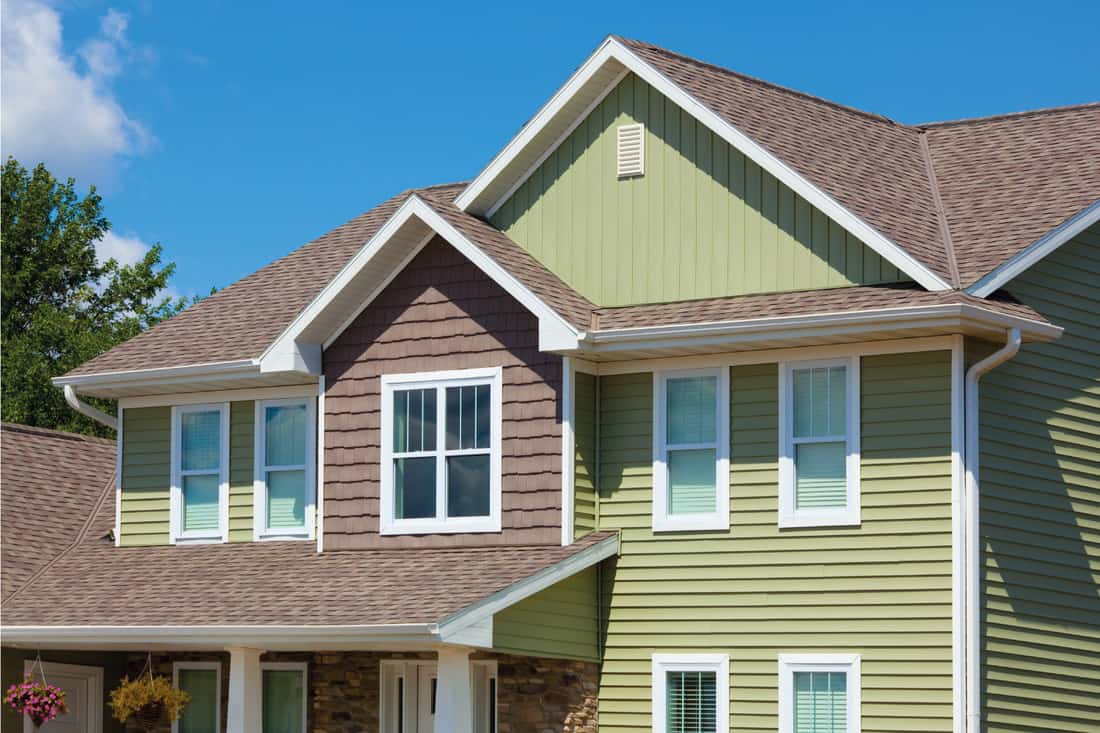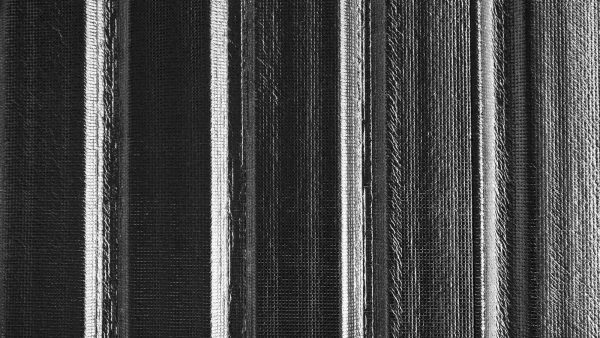Vinyl siding is a long-lasting solution in which to outfit your home's exterior. It comes in various colors and styles, is naturally water-resistant, and is also easy to maintain. As with any other type of material, vinyl siding can show some wear and tear. So how do you repair cracks in vinyl siding without replacing the whole piece? We've done some research and have some options for you.
To repair a crack in vinyl siding, complete the following steps:
- Choose a day with no chance of inclement weather.
- Clean and prepare the cracked area.
- Prepare caulk in caulk gun (or use precision tip).
- Use a putty knife to ensure smooth application.
- Use a utility knife to scrape away excess caulk.
- Paint if needed.
- Alternatively, use a patch.
These are the most basic steps in repairing a crack in vinyl siding. Keep reading, and we'll discuss each step in detail, as well as an alternative patching method if the crack is too large to repair with caulk. We'll also go over some additional questions you might have. Keep scrolling!

How to Repair Cracked Vinyl Siding
To repair vinyl siding using the steps we've outlined above, you will need:
- A clean, lint-free cloth
- Mild soap and water mixture (a few drops of dish soap in a gallon of water will do) or rubbing alcohol
- Caulk
- Caulk gun (optional, but useful)
- Putty knife
- Utility knife
- Paint (optional if using color matching caulk)
The caulk method of repair is quick and easy and works well with minor cracks. For larger defects unable to be covered in caulk, you'll want to cover the crack with a patch.
To repair using a patch, you will need:
- Clean, lint-free cloth
- Mild soap and water mix or rubbing alcohol
- A piece of scrap vinyl or prefabricated vinyl patch
- Caulk (optional if using a prefabricated vinyl patch with a self-adhesive back)
- Paint (unnecessary if using scrap vinyl that matches your home's exterior)
1. Choose a day with no chance of inclement weather

Whatever method you choose to make your repair, ensure you schedule the project for a bright, sunny day with no reports of inclement weather for at least 24 hours afterward. Once the caulk is applied, it needs time to dry and cure fully; it takes at least 24 hours from application for it to be fully hardened and waterproof. Check the forecast before starting.
2. Clean and prepare the cracked area
Cleaning the area is an important step that could affect the integrity of your repair if skipped. Clean the crack and surrounding area using a clean, lint-free cloth (tack cloth is great) and mild soap and water. If you'd prefer, you can use rubbing alcohol on the cloth instead of soap and water. Whichever method you choose, allow your surface to completely dry before moving on to the caulking stage.
We may include affiliate links and curated AI content to highlight top design styles.
View this tack cloth on Amazon.
3. Prepare caulk in caulk gun (or use precision tip)
Load the caulk into a caulk gun. If not using a caulk gun, ensure the caulk you purchase has a precision tip for easier application. Retailers that sell vinyl siding will generally sell colored caulk, so if possible, get a color that matches your vinyl siding. This will save you having to buy paint to match your siding, which can be quite the task if you've had your siding for quite some time. Regular caulk will work fine, just be prepared to paint.
View this caulk gun on Amazon.
Be sure to read the manufacturer's instructions on your chosen caulk for drying and curing times. Then, apply the caulk to the cracked siding in a smooth, even line.
4. Use a putty knife to ensure smooth application
Once the caulk has been applied, use a putty knife to smooth the surface so that it is level with the vinyl siding. Remember, once this dries, we want it to look like a complete piece of siding. Smoothing the surface also ensures caulk thoroughly makes its way into the cracked area.
View this putty knife on Amazon.
5. Use a utility knife to scrape away excess caulk
Once the caulk has dried and cured, scrape away excess using a utility knife or razor blade. This ensures the smoothest surface possible and takes away visual flaws.
View this utility knife on Amazon.
6. Paint if needed
If you couldn't find tinted caulk, you need to paint over the caulk once it cures. Apply at least two coats of paint over the cracks using a feathering technique to blend into the siding. Due to weather and exposure, it might be difficult to match the color exactly; the feathering technique will help blend. Allow the paint to become at least touch dry in between coats.
While your outside, did you notice your windows require cleaning? Read our post, "How to Clean Window Tracks."
7. Alternatively, use a patch
If you've wondered if you can patch vinyl siding, you'll be happy to learn patching is a great alternative method. If your crack is just too large to use caulk, or you tried the caulking method and failed, then it might become necessary to apply a patch.
You can procure two types of patches to cover the marred spot: a prefabricated adhesive patch made of PVC plastic or by creating your own out of scrap vinyl. Many homeowners might still have pieces of leftover vinyl tucked away in their garages or outbuildings. Scrap vinyl works great for small repairs. If you don't have scrap vinyl, the prefab patch is a viable option.
Prefabricated PVC Patch
These patches have an adhesive back that is revealed by peeling off the protective covering. To apply these patches, follow the manufacturer's instructions. You will definitely need to clean the spot as you do with the caulking repair, as the adhesive won't cling well to a dirty surface.
Once the patch has been applied and cured, you will need to paint over the patch using the method mentioned in the repair above, as these patches come in white.
A tip on using these patches -- if the hole or crack is exceptionally large, you might want to use a low expanding foam to fill the hole or crack first, sand it, and then apply the patch so it has an even area on which to adhere. Be sure to read the instructions on the expanding foam thoroughly so you are informed on curing time and any additional precautions.
Scrap Vinyl
To use a piece of scrap vinyl to cover the crack, measure the length to cover the hole at least three inches on either side. Cut off the uppermost edge (the nail hole strip) of the siding and leave the curved lip. Cut off the bottom edge as well while also leaving the curved lip. These curved points on either end will grip onto the existing piece of siding.
Fit the patch over the hole to make sure it fits well. Trim as needed. If the fit is good, use caulk around the hole and on the back of the scrap vinyl. Adhere the vinyl over the hole and fit into place. You can secure the vinyl using some screws and a power drill on the underside if desired. However, once the caulk dries and cures, this should not be necessary. If you want to ensure the vinyl stays in place while the caulk dries and cures, feel free to secure the area with duct tape until the adhesive has taken hold. Remove the duct tape after 24 hours, at least.
When using scrap vinyl, the edges will, of course, be visible. We recommend trying the caulking method first and only proceeding to patch if necessary.

How Much Does It Cost To Repair A Piece Of Siding?
Replacement vinyl is around $30 to $40, depending on how big of a piece you need. It is difficult to find a piece that will exactly match your home, especially if it has been a while since you installed the siding. Even with extra pieces you've kept, weathering means the replacement piece will not exactly match your existing siding.
Can You Replace Siding Yourself?
Replacing the entirety of one's siding is not an easy DIY job. Replacing just a piece or two is definitely something you can do on your own, but unless you are a contractor, replacing all the siding is recommended as a job for the professionals, or at the least, a very seasoned DIY weekend warrior.
Here's a great tutorial on how to replace a piece of vinyl siding yourself:
Does Homeowner's Insurance Cover Vinyl Siding?
Your homeowner's insurance will cover damage to vinyl siding if the damage caused was by events listed in your policy. For example, if your policy covers tornado damage and that is what damages your siding, then your siding would be covered.
In Closing
Repairing cracks in your vinyl siding is an easy, do-it-yourself job. Follow the steps we've outlined and take care with your repair, and you might not even know there was damage there, to begin with. Happy home improvement!
Thinking of replacing your siding and want to learn what colors pair well with brick? We have a post about that!






![Get Your Roof Ready: How to Apply Aluminum Roof Coating [Step by Step Guide]](https://homedecorbliss.com/wp-content/uploads/2023/08/shutterstock_1624204837-600x400.jpg)
